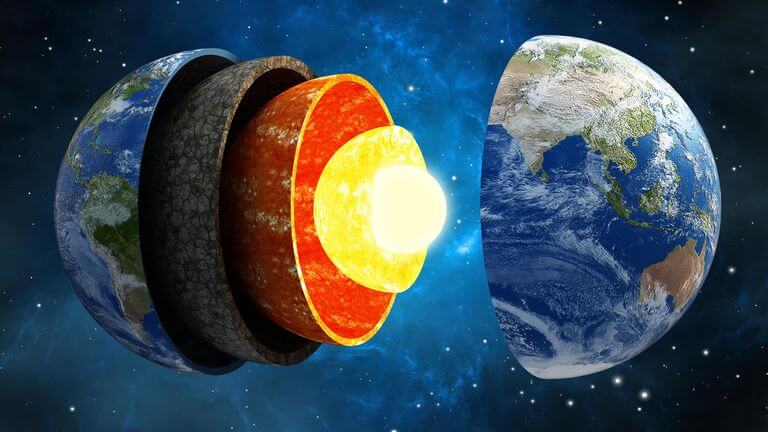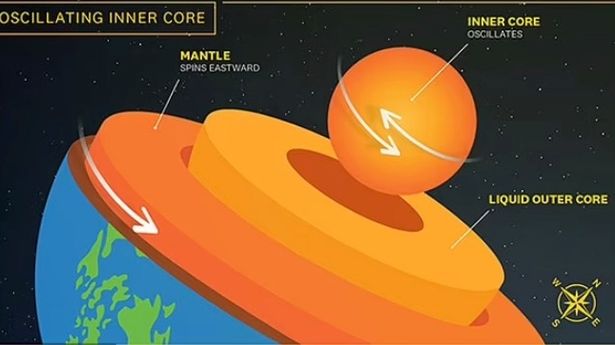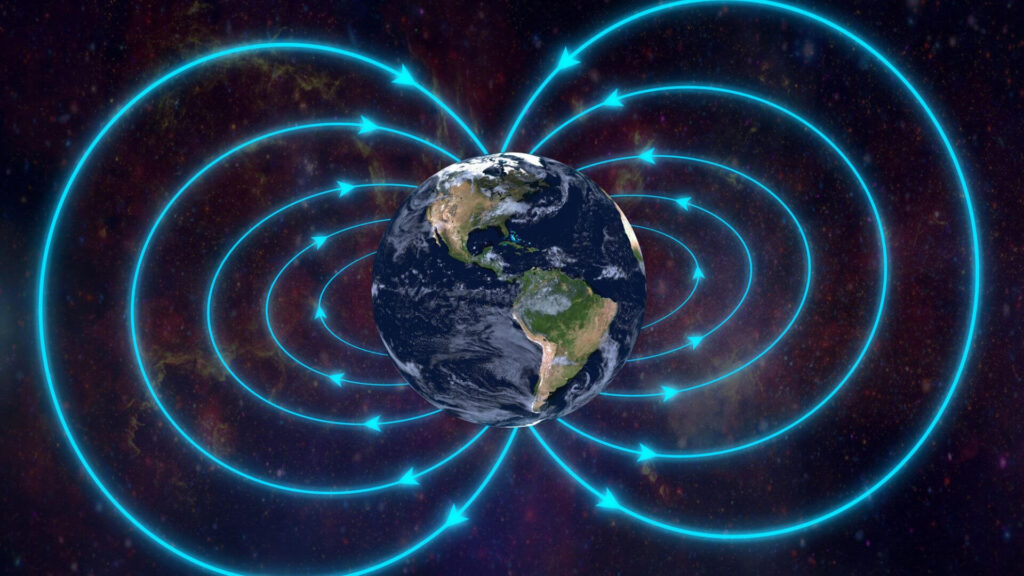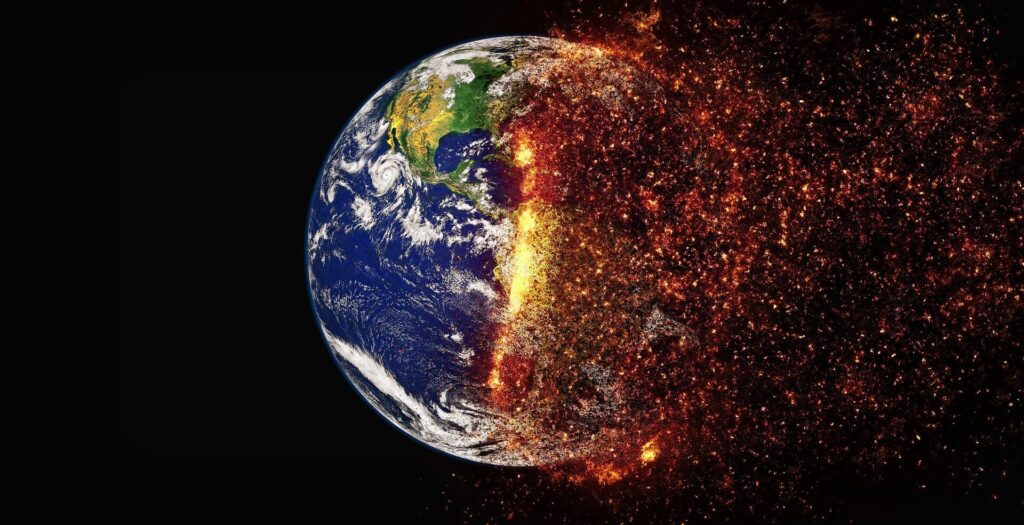At the planet’s centre, there is a solid, spherical area known as the inner core of Earth. It has a 1,200-kilometer radius and is primarily built of iron and nickel (746 miles).
According to recent studies, Earth’s Inner Core has stopped Spinning. The inner core may no longer be hardening or “Spinning.” This process, which is still in progress, is considered to have started about a billion years ago. Thought to have started as a liquid, the inner core started to solidify as the Earth cooled and the outer layers did as well.

What is Earth’s inner core made up of?
Iron and nickel make up the majority of the Earth’s inner core. Although study into its exact composition is still ongoing, it is believed to be predominantly made of iron (Fe), with minor amounts of nickel (Ni), silicon (Si), and sulphur (S). It is believed that the iron and nickel in the inner core exist in a solid, metallic form. Along with being assumed to have a high temperature and density, the inner core’s pressure is thought to be about 3.5 million times that of the Earth’s surface. It is estimated that the temperature is roughly 5700 K (5427 °C or 9800 °F).
Scientists think that the Earth’s Inner Core has stopped Spinning and is currently in a “frozen” state. Recent research demonstrating that the temperature and composition of the inner core have stayed largely stable over the last several hundred million years supports this.

It is still unclear why Earth’s Inner Core has stopped Spinning or why this “freeze” occurred. Some scientists think it might be caused by the pressure and temperature conditions near the inner core’s border, which are estimated to be between 330 and 360 gigapascals and 5,000 to 6,000 degrees Celsius (9,032 to 10,832 degrees Fahrenheit) (4.8 to 5.2 million pounds per square inch).
It’s also conceivable that modifications to the Earth’s magnetic field are to blame for the inner core’s cessation of rotation. The mobility of the molten iron in the outer core, which creates the Earth’s magnetic field, may have an impact on the inner core’s solidification.
In general, research into the Earth’s inner core is currently ongoing, and scientists are still trying to comprehend its characteristics and how it has changed through time.

What will happen if the Earth’s core stops spinning?
The Earth’s inner core’s loss of rotation would have a major effect on the planet. The Earth’s magnetic field, which shields the planet from hazardous solar radiation, is largely produced by the inner core.
The Earth’s magnetic field would deteriorate or vanish without the rotating inner core. As a result, the globe would be more susceptible to solar flares and other types of solar radiation, which might have a negative impact on the environment and human civilization.
Van Allen radiation belts, which are areas where charged particles are trapped by the Earth’s magnetic field, would likewise be disrupted by the absence of a magnetic field. Without these belts, the Earth would be blasted with these dangerous cosmic rays, which help shield the globe.
Also Read : What is BharOS? |Android’s Rival is Here
Additionally, the Earth’s rotation would probably alter without the inner core’s rotation. This could result in a change in the planet’s axis, which would significantly affect weather and climate.

In conclusion, the planet and its inhabitants would suffer greatly if the Earth’s Inner Core has stopped Spinning. The Earth’s rotation would alter, leading to substantial changes in weather patterns and temperature, and the magnetic field would diminish or disintegrate, leaving the planet vulnerable to solar radiation.
The article assumes the data you cite is current and accurate, but to the best of my knowledge, this is not the case, and there is no proof that the Earth’s Inner Core has ceased spinning.

Amazing food for thought :), your write ups are very realistic and authentic 👌🙌 keeping going and growing 👍